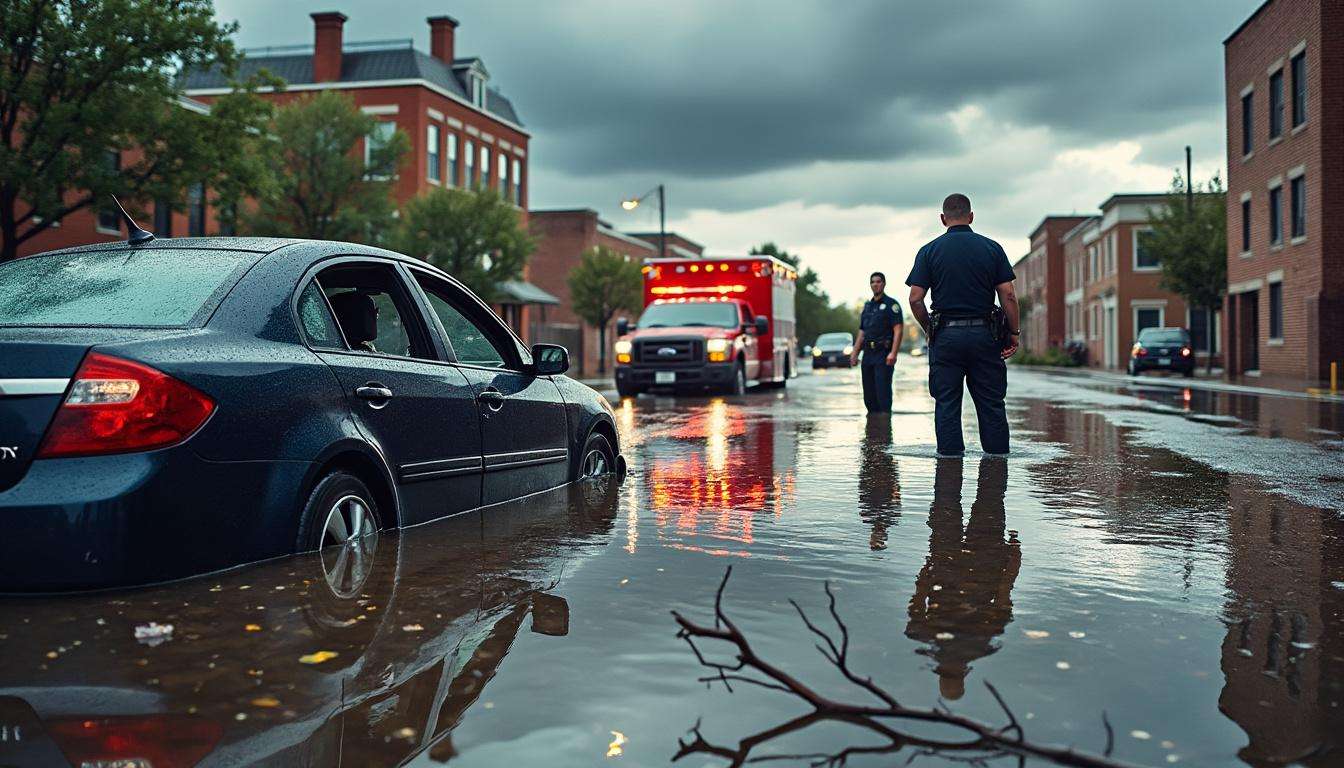Milwaukee faced an unprecedented weather challenge recently, with relentless rainfall transforming city streets into waterways and causing widespread flooding. This “1,000-year rain event” unleashed over 10 inches of rain in some areas, leading to significant vehicle damage, road closures, and stranded motorists. Amid the chaos, a pressing concern arises for drivers: how does car insurance respond to flood damage? As water levels recede and repair estimates emerge, understanding the nuances of insurance coverage is essential to navigating the financial aftermath of such natural disasters.
How Does Comprehensive Car Insurance Protect Against Flood Damage?
When floodwaters invade vehicles, the resulting damage can range from minor cosmetic issues to complete engine failure. In Milwaukee’s recent storm, many drivers faced these grim possibilities. The key factor determining insurance assistance lies in having comprehensive car insurance coverage. This type of policy typically covers flood damage, including repairs from water ingress, hail damage, and falling debris related to storms, although it’s important to note that coverage comes after the deductible is applied.
- Water damaging interior components such as upholstery and electrical systems.
- Engine damage caused by water immersion, which could lead to a total loss if severe.
- Cosmetic issues like rust and fogged headlights resulting from flood exposure.
- Storm-related incidents such as hail damage or broken windshields due to falling branches.
Companies like Progressive, GEICO, State Farm, and Allstate emphasize that comprehensive coverage is often optional but crucial for protecting vehicles in flood-prone regions. For drivers without this coverage, repair costs from flood damage generally must be paid out of pocket. It’s equally vital to review your policy before storm season since insurers often enforce “binding restrictions” preventing last-minute coverage changes.
Types of Flood Damage Covered by Auto Insurance
Not all water damage is treated equally by insurance providers. Comprehensive coverage typically includes repairs for:
- Floodwaters entering the vehicle while driving through inundated streets or parking in flooded areas.
- Damage caused by standing water lingering after flood events.
- Electrical and mechanical failures linked directly to water exposure.
- Storm-related physical damage, including broken windows and dents.
However, damage to non-factory installed electronics — such as GPS devices, aftermarket stereos, or CB radios — is frequently excluded. According to industry reports, while insurance policies through providers like Nationwide, Liberty Mutual, and Farmers Insurance may cover core vehicle repair costs, they typically don’t reimburse for specialized electronics lost to flooding.
Further, flood insurance policies focused on homeowner protection do not extend coverage to vehicles. Vehicle owners must rely on their car insurance plans to address flood-related damages. This distinction underscores the importance of understanding the precise terms of your insurance prior to facing a flood event. For more guidance on preparing for such emergencies, exploring our storm preparation tips for insurance is highly recommended.
Responding to Flood Damage: What Steps Should Vehicle Owners Take?
Once floodwaters subside, the reality of vehicle damage often becomes apparent. Early and informed action can influence insurance claims and repair outcomes drastically.
- Document the damage thoroughly with photos and videos to provide clear evidence during your insurance claim process.
- Contact your insurance provider promptly to report the incident and understand your coverage details.
- Avoid starting the vehicle if it was submerged, preventing further engine damage.
- Arrange for professional assessment to accurately estimate the repairs needed.
- Keep records of all repair estimates, costs, and communication with your insurer.
Insurance companies like USAA and American Family Insurance often provide helpful resources and adjuster support to guide claimants through the process. It’s also valuable to keep abreast of local weather alerts and prepare financial contingencies before storm seasons as explained in our article on preparing your financial situation for storms.
Why Waiting to Review Your Insurance Can Be Costly
Many drivers only realize gaps in their insurance coverage after damage occurs. The recent Milwaukee flood highlights the critical nature of annual insurance policy reviews. Companies such as Travelers and Farmers Insurance recommend regular assessments of your auto insurance plan, especially if you live in areas prone to heavy rain and flooding. Failure to update or add comprehensive coverage before a storm not only leads to financial exposure but may also result in denial of claims due to last-minute changes being prohibited.
Consulting guides on reviewing your insurance before storm season can help avoid potential pitfalls and ensure your vehicle’s protection aligns with evolving risks.
Compared: Major Insurers’ Approaches to Flood Damage Coverage
While comprehensive coverage is a standard offering across most car insurance providers, specifics can vary. Here’s a brief overview of how popular insurers handle flood damage:
- GEICO: Includes flood damage under comprehensive coverage with competitive deductibles.
- State Farm: Offers specialized advice and emphasizes preparedness for natural disasters alongside flood coverage.
- Allstate: Provides comprehensive repair assistance and claims support for water damage.
- Progressive: Highlights flood damage explicitly as part of their storm coverage, including engine issues due to immersion.
- Nationwide: Covers flood damage but excludes aftermarket electronic devices.
- Liberty Mutual: Encourages customers to review policies before storm season for optimal protection.
- Farmers Insurance: Provides extensive claim services and disaster response resources.
- USAA: Noted for excellent customer service and flood damage coverage for eligible members.
- American Family Insurance: Combines tailored policies with community education on weather preparedness.
- Travelers: Advocates policy reviews year-round and offers flexible comprehensive coverage options.
Understanding your insurer’s approach can significantly influence the ease and outcome of your claim. Familiarize yourself with these details before the next storm hits to ensure smooth recovery efforts. For additional information on managing storm impacts on your property, visit our home insurance tips for water damage and learn how to align your coverage with potential risks.
FAQ: Essential Answers About Car Insurance and Flood Damage
- Does my standard auto insurance policy cover flood damage?
Most standard auto policies do not cover flood damage unless you have purchased comprehensive coverage. - Can I add comprehensive coverage right before a forecasted storm?
Generally, insurers enforce binding restrictions that prevent adding or changing coverage immediately before a storm. - Will flood insurance on my home help cover my car’s flood damage?
No. Flood insurance tied to homes typically covers property damage, not vehicles. - What should I do immediately after discovering flood damage on my car?
Document the damage, avoid using the vehicle, notify your insurer promptly, and seek professional assessment. - Are aftermarket electronics covered if damaged by floodwaters?
Typically, these items are not covered by standard auto insurance policies and may require separate protection.


